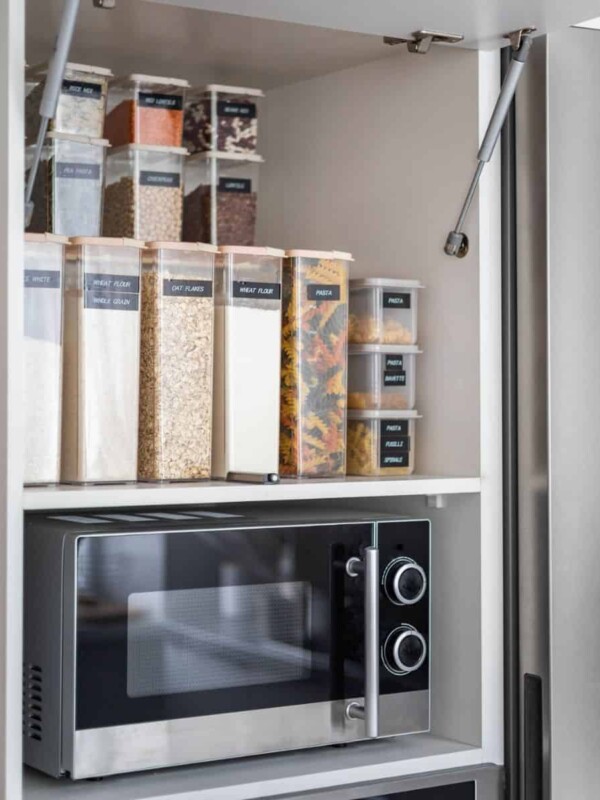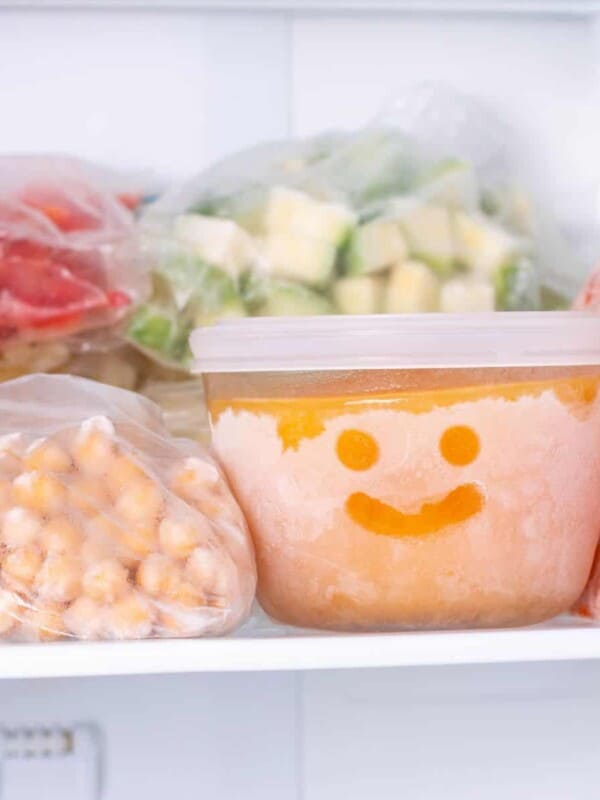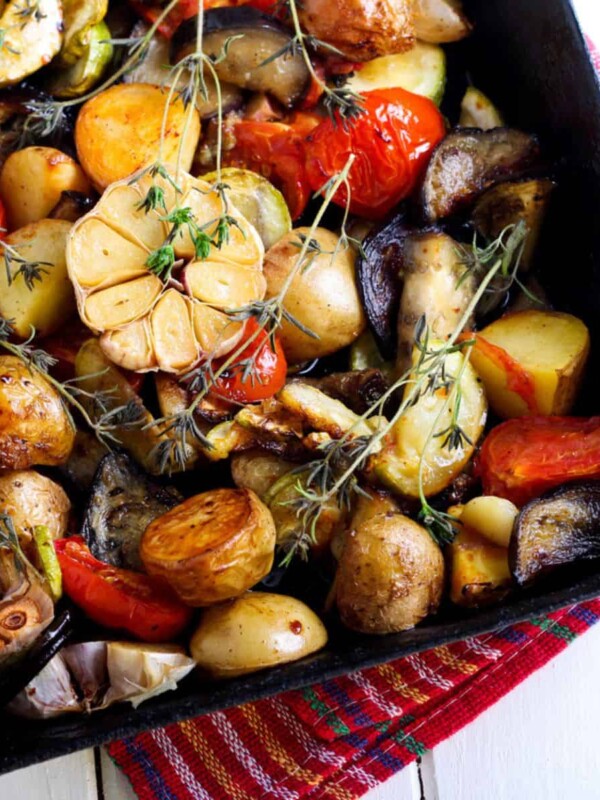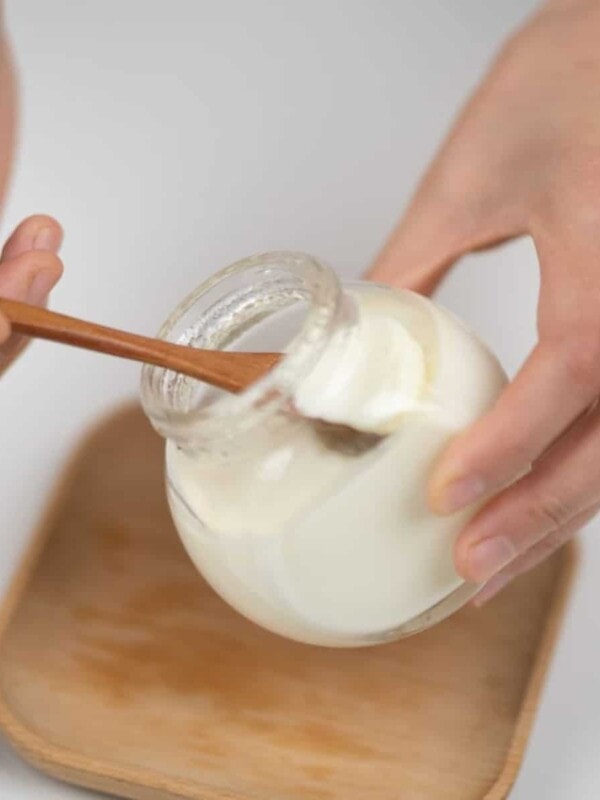This post may contain affiliate links. Please read our disclosure policy.
Here’s the best way to clean a cast iron skillet! Properly clean and well-seasoned cast iron skillet creates a rust resistant, nonstick surface that will be getting just better and better with time!
Cast iron skillet has a naturally non-stick surface, a really incredible heat retention, and it is extremely durable! However, it does require a little help to keep it in top shape.
Just follow these simple steps and you’ll be able to keep your cast iron skillet clean, rust-free, and well-seasoned!
Keep Your Cast Iron Skillet Like New
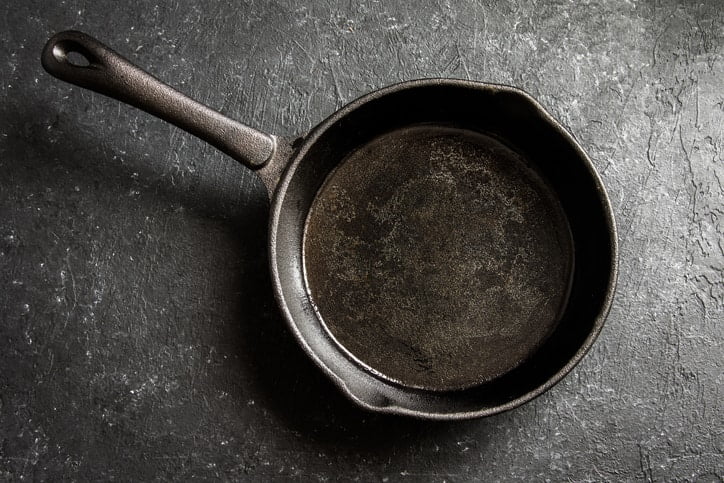
How To Clean a Cast Iron Skillet
Materials Needed:
- Cast iron skillet
- Sponge or a stiff scrub brush
- Clean, dry cloth or paper towels
- Vegetable oil
- Salt
Instructions:
Clean the skillet immediately after use, while it is still hot or warm. Don’t soak the pan or leave it in the sink because it may rust.
Wash the skillet by hand using hot water and a sponge or stiff brush. Avoid using the dishwasher, soap, or steel wool, as these may strip the pan’s seasoning.
To remove stuck-on food, scrub the pan with a paste of coarse salt and water. Then rinse or wipe with a paper towel. Stubborn food residue may also be loosened by boiling water in the pan for 3 minutes.
Thoroughly towel dry the skillet or dry it on the stove over low heat. Since you’re trying to avoid rust, make sure you towel dry your pan well. Also, put it on the stove over low heat to evaporate any remaining moisture.
Using a cloth or paper towels, apply half a tablespoon of vegetable oil to the interior of your pan, and the exterior as well if you like. Buff the skillet to remove any excess oil and until it looks dark and smooth, but not oily.
Let it cool completely and then store the skillet in a dry place. Keep your skillet in a dry, easily accessible spot so it’s ready for you the next time you want to use it!
Important Tips
Don’t use soap, a metal brush, steel wool, or anything else that could scratch the pan or remove its seasoning.
The most important thing to remember about cast iron pans is that it can’t go in the dishwasher or stay in a sink full of water overnight, as it will rust too fast.
In addition, cast iron is quite brittle, so don’t put a hot pan under cold water, since the drastic temperature change could cause it to warp or crack.
Once you clean your pan, you make sure to season it properly.
Clean Up Your Cast Iron Skillet
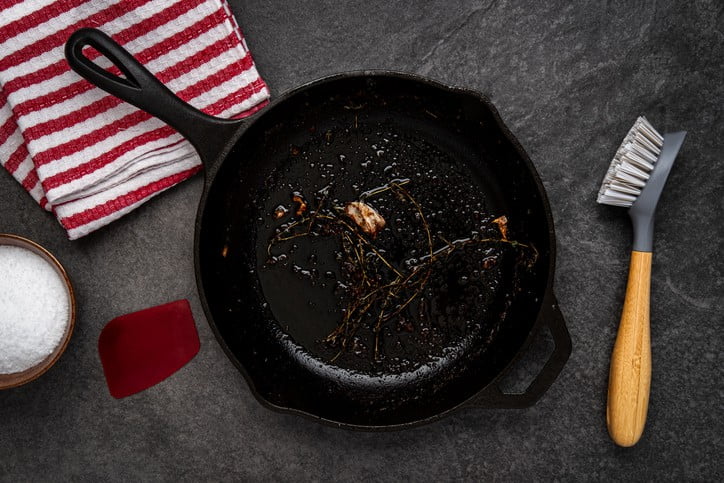
Why to Season a Cast Iron Skillet?
The great thing about cast iron is that it is naturally seasoned, which means that when fat or cooking oil reaches its smoking point, the fatty acids oxidize and create a slick coating on the pan!
The seasoning gives the pan its non-stick qualities, and the more you cook on it, the better the seasoning will become! Seasoning really makes the iron cast pan easy to clean, prevents rust, and keeps food from sticking.
However, if you don’t clean the pan in a correct way, you could strip it of the seasoning coat, and you will need to re-season your cast iron skillet. If your pan looks blotchy or dull, it’s time to re-season your skillet.
Follow the steps below to find out how to re-season your cast iron skillet!
How to Season a Cast Iron Skillet
Materials You Need:
- Dish soap
- Sponge or stiff scrub brush
- Clean, dry cloths or paper towels
- Vegetable oil (any oil of your choice)
- Aluminum foil
Instructions:
First, gather your supplies and then preheat oven to 350°F.
Second, wash the skillet with warm, eco-friendly soapy water and a sponge or stiff scrub brush. Cast iron should not normally be washed with soap, but it’s fine now since the pan is about to be newly seasoned!
After that, rinse and thoroughly dry the skillet with a clean, dry cloth or paper towels.
Then, pour 2 teaspoons of any vegetable oil into the skillet. Using paper towels, rub every surface of the skillet (interior and exterior) with oil. Wipe out any excess oil with paper towels until the surface looks dark and smooth.
Next, use a clean cloth or paper towel to rub the coat around the entire skillet. Flip the skillet: don’t forget to rub oil on the outside and bottom of the skillet. You must have a thin coat of oil around the entire skillet.
Finally, place the skillet upside down on the oven’s center rack. Place a sheet of aluminum foil below the rack to catch any drips. Bake for an hour.
As the skillet becomes hot, this will complete the oxidation process of the oil to coat your pan in a new seasoning.
At last, use hot pads to remove the skillet and let it cool completely. Seasoning makes the pan easy to clean, prevents rust, and keeps food from sticking. Once the skillet is cooled down, you’re good to go!
A Completely Nonstick Cast Iron Skillet

Storage
The last and most important rule is to always thoroughly dry cast-iron cookware before you store it away.
Even the slightest bit of dampness will cause the pan to rust, which is why cast iron skillet rusts more easily in summer than in winter.
In fact, it’s smart to place a paper towel into the pan to absorb any excess moisture or humidity.
Skillet Recipes
A newly seasoned skillet is smooth, shiny, and completely nonstick. You’ll know it’s time to re-season if food always sticks to the surface or if the skillet appears dull or rusted.
You can use a cast iron skillet for almost any recipe — as long as you take the time to maintain it and keep it in a good condition. Now go grab your freshly cleaned skillet and make some yummy food!

